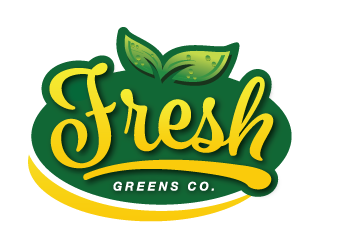Microgreens are the tiny greens you see as garnishes on fancy dishes and whipped up into salads.
But despite the minimal amount in recipes and their tiny size, they’re gaining popularity by the day. In fact, chefs have been incorporating them into their dishes since the ‘80s.
So, what exactly makes them so famous? And what is known about them, other than their obvious size and color?
Basically, microgreens are young seedlings of herbs and vegetables. What makes them stand out is their composition; they pack a nutritional punch and evidence suggests that they contain up to 9 times more nutrients than their mature counterparts.
After all, big things come in small packages!
This article will provide an overview of the health benefits of microgreens and provide an insight into the nutrients they contain.
Without further ado, let’s get started.
Help Manage Weight
Incorporating an optimum amount of microgreens into your diet can help control weight gain.
A laboratory study conducted on mice supports this idea, though no studies have been tried with human beings yet.
Some mice were fed a high-fat diet alone, while others’ diet was topped up with red cabbage microgreens. It was observed that the latter gained lesser weight than the former. Additionally, they had lower levels of “bad” cholesterol, also called LDL cholesterol.
If you’re aiming to control your weight, snacking on red cabbage microgreens or adding them to your salad would be a great idea.
Benefit The Skin
Microgreens benefit the skin in various ways, primarily owing to their content of polyphenols (a group of antioxidants).
Fight Against Aging Skin
Polyphenols trigger the production of elastin and collagen. These two proteins are in charge of keeping your skin smooth and firm. Hence, you can expect a lower number of wrinkles that accompany aging skin if you consume an optimum amount of microgreens.
Better Skin Repair
Additionally, these polyphenols stimulate blood flow to the nerves right under the surface of the skin. The added nutrients and oxygen this blood flow brings to the skin results in more efficient repair of damaged skin cells.
Boost Eye Health
Eating microgreens contributes to improved eye health, including the delay, prevention, and cure of certain conditions.
Clearer Cornea And Better Vision In The Dark
Microgreens are rich in vitamin A, which contributes to a clearer cornea (the outer covering of your eye). This vitamin is also a component of a specific protein that aids vision during the night.
One cup of radish microgreens provides vitamin A equivalent to 19 cups of its mature alternative!
Protection From The Sun
Microgreens also contain a carotenoid called Lutein. Studies show that Lutein is beneficial for eye health in several ways. It acts as a filter and protects eye tissues from sunlight, thus helping prevent UV-related eye injuries.
To incorporate a rich amount of Lutein into your diet, you can consume Spinach microgreens (amongst others) regularly.
Improve Digestion
Another health benefit of microgreens is that they boost the body’s resistance to invading germs, especially those that belong to the Brassicaceae family (such as kale and cabbage). This is because they contain prebiotics which act as food for the beneficial bacteria in the body’s lower digestive tract.
Prevent Certain Diseases And Conditions
Perhaps the most promising health benefit of microgreens is how they help prevent certain diseases and conditions. This owes to the vast nutrients embedded within the young greens – they do more wonders for the body than you’d expect!
Cancers
The polyphenol content in microgreens can potentially prevent and treat cancer, a study suggests.
Microgreens aid cancer prevention because they can help eliminate more free radicals from the body than it is capable of removing on its own. If these free radicals are left to accumulate, they can cause diseases such as cancer.
Additionally, microgreens can help in cancer treatment and avoid it from re-occurring in the future.
This property is especially true for broccoli sprouts, which contain the compound sulforaphane. This attacks cancer stem cells which are responsible for the recurrence of the disease. These chemopreventive properties of microgreens have been studied and backed by proof.
Eye Problems
Evidence suggests that microgreens, owing to their content of Lutein, help prevent eye problems that are likely to arise with increasing age, such as cataracts and macular disease. This function is also enhanced by the presence of vitamin C and vitamin E in microgreens.
Heart Disease
Microgreens are rich in antioxidants, which reduce “bad” cholesterol levels. This leads to lower risks of heart disease.
Additionally, microgreens contain vitamin K, which plays an integral role in blood clotting and regulating blood pressure. This, in turn, prevents cardiovascular diseases and arterial calcification.
Microgreens rich in vitamin K include kale, broccoli, and spinach.
Certain Skin conditions
Because microgreens contain antioxidants, they help improve inflammatory skin conditions. Examples include dermatitis, psoriasis, and even acne breakouts.
Kidney Disease
Although it has not been proven that microgreens can potentially avoid kidney diseases, several tailored microgreens have been produced that are suitable for patients with kidney problems.
Leafy greens are generally high in potassium, while potassium consumption is restricted for such patients. Depriving kidney patients of all leafy greens would prevent them from availing the health benefits these have.
The tailored microgreens produced, hence, contain lower levels of potassium while providing all the other “good” nutrients. This makes them a useful alternative for patients accustomed to eating their vegetables.
Other Health Benefits Of Microgreens
Microgreens contain a vast number of vitamins. Each of these has its own health benefits (in addition to the benefits discussed above).
- Zinc boosts the immune system and is essential for reproductive health.
- Vitamin C aids in the healing of wounds.
- Vitamin E contributes to strong blood vessels.
- Iron plays an integral role in the formation of red blood cells (RBCs).
- Calcium leads to stronger bones and healthier muscles.
- Potassium helps the functioning of the nervous system.
Final Words
Don’t underestimate the health benefits of microgreens by their small size – they contain a lot more nutrients than their mature alternatives and they’re beneficial for the body in numerous ways.
Plus, you can incorporate them into your diet in a variety of ways: eat them raw, use them to garnish your dishes, whip them into your salad, blend them into smoothies, and more!
So, you might want to add microgreens to your next grocery list, or better yet, grow them in your backyard (which is a story for another day).
For fresh food in Viet Nam visit anchay.vn.





